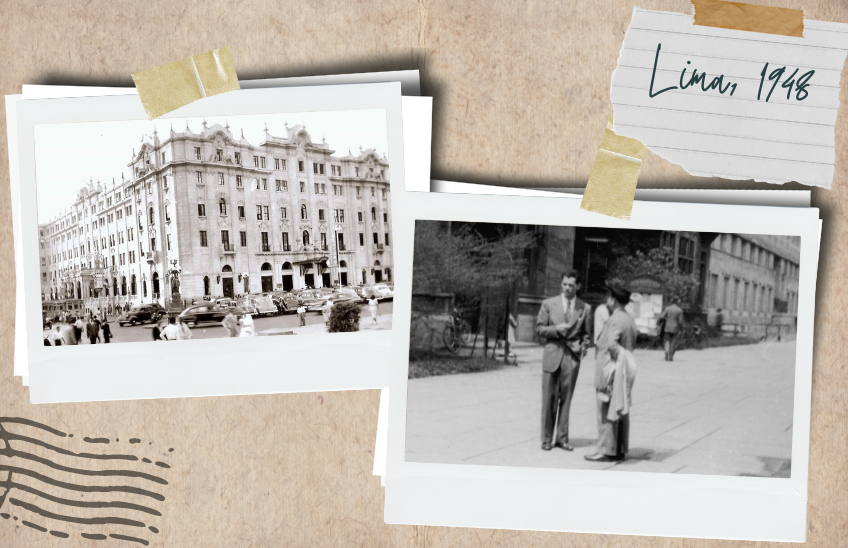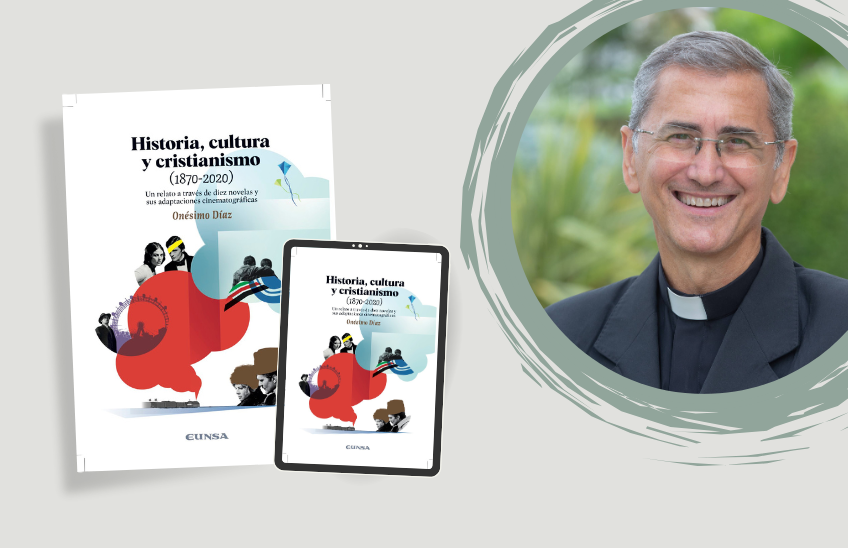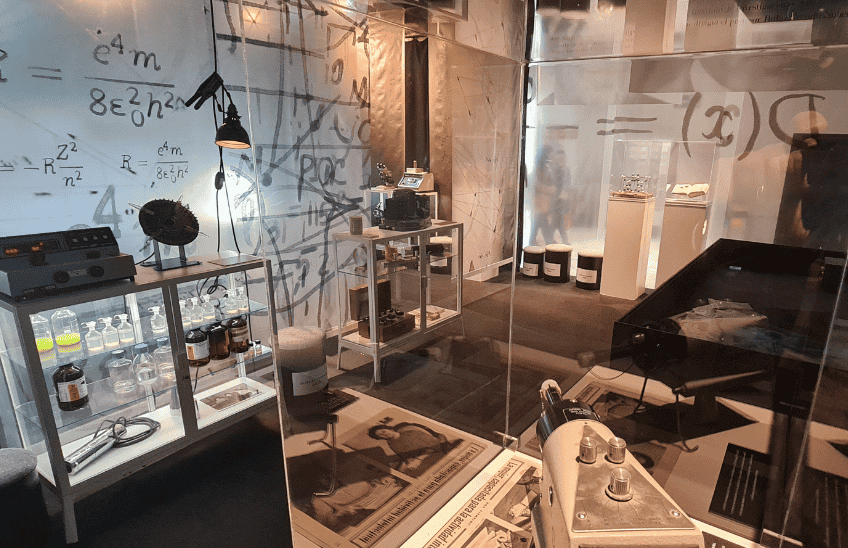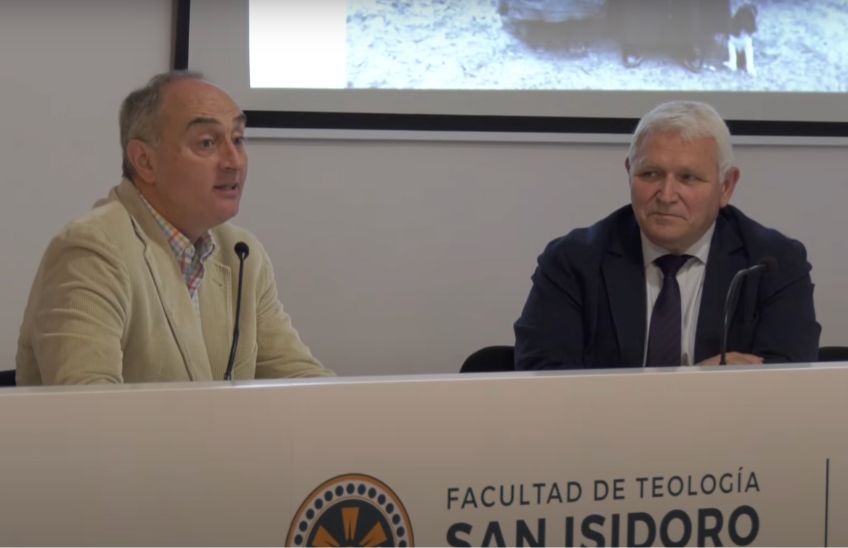The first steps of Opus Dei in Peru (1948)
Chronicle of the trip through America (Part 4). During their exploratory trip to America, Pedro Casciaro, Ignacio de la Concha and José Vila visited Lima, where they met with diplomats, ecclesiastical authorities and academics. These initial meetings laid the groundwork instructions for the arrival of Opus Dei in the country a few years later.

16 | 08 | 2023
goal For the founder of Opus Dei, the main purpose of the exploratory trip to America that he entrusted to the priest Pedro Casciaro and the academics Ignacio de la Concha and José Vila, in 1948, was to assess the possibilities of transplanting Opus Dei in that continent. They wrote a diary throughout the six months of their trip and also sent letters to St. Josemaría during their journey. From these documents we know that they saw the opportunity to establish contacts and cultivate friendships in two key areas: the ecclesiastical and the academic.
The purpose of meeting with the largest issue of ecclesiastical authorities, especially bishops, was to explain the message of Opus Dei and, if necessary, apply for permission to begin the apostolic work in that diocese. For the founder, the latter was an essential condition.
No less important was to visit American universities and establish good relations with academics. This trip was not only an expedition for that spiritual purpose. Professors José Vila and Ignacio de la Concha had applied to the Spanish Ministry of Foreign Affairs for a scholarship to carry out a culturalmission statement in America. Their project contemplated a complete study of the cultural conditions of the universities and higher scientific centers of the countries visited.
Therefore, they were interested in creating and consolidating future networks that would serve for this purpose purpose. In their travel diary they collected ideas about the organization of the higher educational system in the American countries they visited; the programs of courses and subjects; the organization of the campus, etc. They also tried to take some photographs and collect brochures and other subject material that would provide ideas on the functioning of the American universities.
At the same time - and inseparably, according to Opus Dei's own apostolate, carried out in and through the profession - these contacts served to make its spirit known and spread among them the message of the Christianization of intellectual environments and from there radiate it to the rest of society.
They also had to inquire about the pastoral needs of the local churches in each place. Their conversations with prelates and academics, visits to campus of universities and Opus Dei's own experience in Spain, led them to conclude that the installation of student residences could be a good start in America.
His stay in Lima
After traveling through the United States, Canada and their extended stay in Mexico, the three expedition members arrived in Lima on August 11, 1948. Unlike the previous countries, here they only visited the capital and could not travel to other cities.
During their brief stay they stayed at the Hotel Bolivar. The change of hemisphere implied a change of season for the travelers. They went from summer days and heat to the Peruvian winter. On their first day in Lima they noted in the Diary, "here we are in plenary session of the Executive Council winter; we drink coffee in a lounge warmed by a good fire in the fireplace; it is not however very cold".

Initially, they had planned to stay four days before continuing their trip to Chile. But, finally, they were able to extend their stay for a few more days, until August 16, to conduct interviews with diplomats, ecclesiastics and academics. The following is recorded in their diary: "Given the reception of the ambassador and the people, it seems convenient not to leave tomorrow for Chile as they had thought. We will stay until Monday".
At the Spanish Embassy they were received by the cultural attaché José María Moro, who helped them in their tours of the Peruvian capital. First he accompanied them to the Catholic University, where they met with the Vice President, who took them to visit the high school Riva-Agüero and the School Law School.
Moro then accompanied them to the episcolpal palace and introduced them to the Archbishop of Lima, Juan Gualberto Guevara. In the Diario they noted:
"Without hardly waiting, we were received by His Eminence, who immediately became very interested in the coming of the Work to Peru. They have some serious problems here, and he hopes that the Work can solve them. Although he did not have much of an idea beforehand, he soon became aware of everything and is so anxious for our coming that when Pedro asked him for a photograph dedicated to Father [Josemaría Escrivá], he replied that he would not do so unless there was a promise of our immediate coming (...) He blessed us and we bade him farewell.
By letter, Pedro Casciaro told the founder how nice the Peruvian archbishop was and how "he has been extraordinarily interested and has made several people come to visit us at the Hotel where we lived, among them the president of the A. C., who is the General of Fine Arts and Cultural Extension. C. who is the Director General of Fine Arts and Cultural Extension". In addition, Archbishop Guevara recommended them to visit the priest Eduardo Pitcher Peña, who worked with young university students.
Among the letters of recommendation the travelers had was one addressed to José Agustín de la Puente, a Peruvian historian, Full Professor, genealogist and lawyer from the Catholic University. It had been written by Guillermo Lohmann, a Peruvian historian and diplomat working at the Peruvian embassy in Madrid, and a friend of Vicente Rodríguez Casado, a member of Opus Dei. However, upon arrival, they discovered that De la Puente had been operated on the day before for tonsillitis. Fortunately, a few days later they were able to meet him at his home, and the travelers were pleasantly impressed.
The short stay in Lima allowed them to meet several diplomats and academics, the president of Catholic Action and some priests. They were able to tell all of them about Opus Dei, and among others, Archbishop Guevara, expressed some concern about the training of the university students.
A good seed
Before leaving for Chile, the travelers handed out informative pamphlets about the Work and some holy cards and relics of Isidoro Zorzano. Upon arriving in Santiago de Chile, José Vila wrote a few lines to the Founder: "although we have only been a short time in Lima, we have taken away a wonderful impression: there is a field of work, of course, where is there not?
Ignacio de la Concha shared Vila's good expectations; "we have left Lima with great eagerness to return, to come back (...) among the university students, without a concrete attention in his training. It is a pity. Pedro will tell you how the Cardinal, with great eagerness that he will return soon". That concern was to be a point core topic in the future establishment of initiatives for the training of the university students.
The contacts established during the fleeting visit to Lima were also a fruitful seed. Shortly afterwards, José Agustín de la Puente traveled to Spain for academic reasons and there he befriended the historian Vicente Rodríguez Casado, one of the first members of the Work. He also got to know first hand some of the university residences run by Opus Dei. For all these reasons he was encouraged to form, together with a handful of academics from the Catholic University and high school Riva-Agüero, a board of trustees for promote a residency program of students. However, the project could not be carried out.
A few years later, in 1952, José Agustín de la Puente and the rest of the board of trustees proposed to Vicente Rodríguez Casado to give the patrimony of the association to Opus Dei so that it could start a residency program for students in the style of the apostolic work of the Work. That financial aid and incentive prompted in 1953 the transfer to Peru of the priest Manuel Botas to begin the apostolic work. A year later, three young Spanish women landed in Lima to carry out the apostolic work of Opus Dei with women.
_______________
Text elaborated from:
Santiago Martínez Sánchez, "Los ojeadores. A long journey through America". Episode of the Fragments of History podcast (2023).
Santiago Martínez Sánchez, "The scouts. A long journey in 1948 to prepare the arrival of Opus Dei in America," in Studia et Documenta, Vol. 17, (2023), pp. 67-109.
Santiago Martínez Sánchez and Federico Requena, "The transnational expansion of Opus Dei from Spain to Ibero-America: origins, modalities and contexts (1948 -1956)," in Revista de Historia, Nº.30, (2023), pp. 1-35.
Related content:
75 years of Pedro Casciaro's first pilgrimage in Mexico. Chronicle of the journey through America (Part 1).
An apostolic and cultural expedition. Chronicle of the trip through America (Part 2).
A broad apostolic horizon (Part 3).



